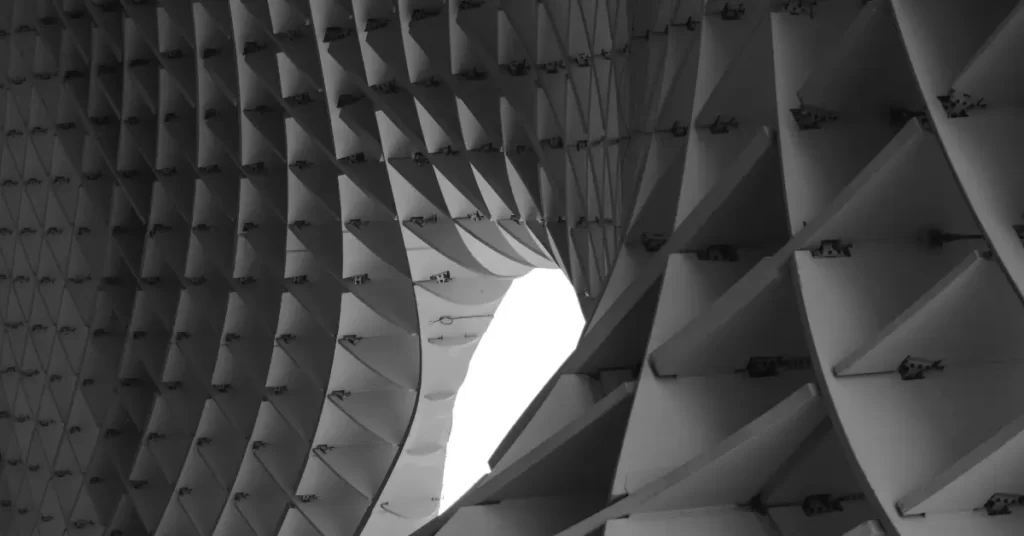Architecture is an ever-evolving field, constantly seeking new ways to push the boundaries of design and construction. One of the most promising and innovative approaches to emerge in recent years is parametric design. This approach to design is revolutionizing the way architects work, enabling them to create highly complex and efficient structures that were once impossible to achieve. In this blog, we will explore the world of parametric design and how it’s expanding the possibilities in architecture.

What is Parametric Design?
At its core, parametric design is an approach to design that uses computational algorithms to generate highly complex and efficient structures. This approach is based on the use of parameters, or variables, to define the properties of a design. These parameters can be adjusted and manipulated, allowing the designer to explore a wide range of design options and variations.
One of the primary benefits of parametric design is that it allows architects to create highly complex and intricate structures that are impossible to achieve with traditional design methods. By using algorithms to generate and manipulate designs, architects can create structures that are optimized for specific functions and requirements, such as structural stability, energy efficiency, and sustainability.
Sustainability and Efficiency in Parametric Design
Sustainability and efficiency are two key areas where parametric design is making a significant impact in the field of architecture. With the increasing demand for sustainable and energy-efficient buildings, architects are turning to parametric design to create structures that are optimized for these purposes.
For example, parametric design can be used to optimize a building’s orientation and shape to maximize solar gain and minimize heat loss. It can also be used to create highly efficient building systems, such as HVAC systems, lighting, and water management systems.
In addition to sustainability, parametric design is also improving the efficiency of the design and construction process. By using computational algorithms to generate and manipulate designs, architects can quickly explore a wide range of design options and variations, reducing the time and resources required for traditional design methods.
Parametric Design: the Possibilities in Architecture
The potential of parametric design in architecture is enormous, and we are only just scratching the surface of what’s possible. As computational power continues to increase, and new tools and software are developed, the possibilities for parametric design are expanding rapidly.
One area where parametric design is showing particular promise is in the design of complex structures, such as bridges, stadiums, and other large-scale structures. By using parametric design, architects can create structures that are optimized for specific functions and requirements, such as structural stability, wind resistance, and load-bearing capacity.
Another area where parametric design is making an impact is in the creation of modular building systems. By using parametric design to create a series of standardized building components, architects can quickly and efficiently assemble buildings that are customized for specific needs and requirements.
Challenges and Limitations of Parametric Design
While parametric design has enormous potential in the field of architecture, it also comes with its own set of challenges and limitations. One of the primary challenges is the steep learning curve required to master the complex software and algorithms used in parametric design.
Another challenge is the cost and resources required for parametric design. While the use of computational algorithms can reduce the time and resources required for traditional design methods, the cost of the software and hardware required for parametric design can be prohibitive for many architects and firms.
In addition, there are limitations to what can be achieved with parametric design. While it’s possible to create highly complex and efficient structures, there are still some limitations to what can be achieved with this approach. For example, parametric design may not be suitable for designing structures with irregular shapes or non-rectilinear forms. It’s also important to note that parametric design is not a replacement for good design skills and knowledge. Rather, it’s a tool that can help architects explore and create new possibilities in design.
Conclusion
Parametric design is an innovative approach to architecture that’s revolutionizing the way we think about design and construction. From sustainability to efficiency, this approach offers enormous potential for architects and designers to create highly complex and efficient structures that were once impossible to achieve. While there are challenges and limitations to parametric design, its potential for expanding the possibilities in architecture is undeniable. As this approach continues to evolve and develop, we can expect to see even more exciting and innovative designs emerging in the field of architecture.
For more SketchUp tutorials you can check out https://www.sketchupguru.com/blog/
You can also check more tutorial videos for sketchup on our YouTube Channel,
https://www.youtube.com/c/SketchupGuru
To know about the Top Online 3D Rendering Courses for 2022 click,










